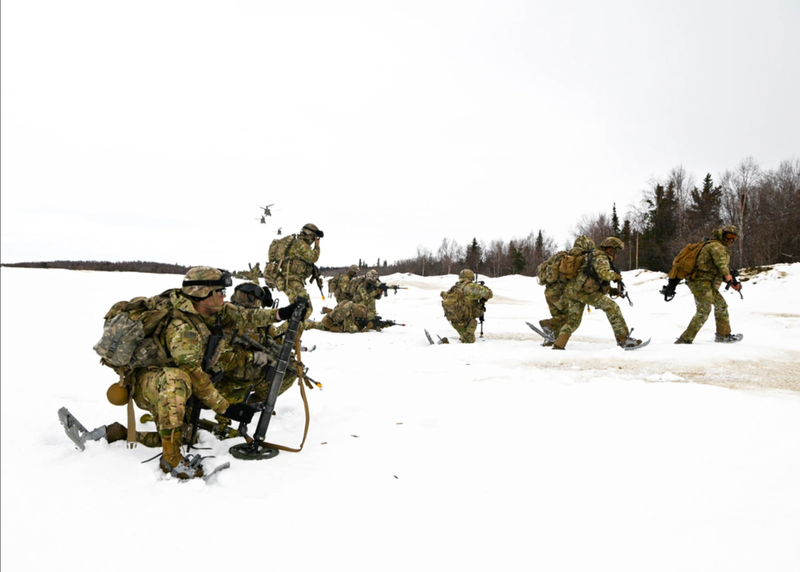
The 11th Airborne Division's unique history, location, and training, makes it an ideal fighting force to face future threats in the Pacific and Arctic areas of responsibility.
The unit was first activated in 1943 and saw combat in the Philippines during World War II. During the Korean War, the division fought in the Battle of Yongju before it was reactivated in 2022 to respond to growing threats in the Pacific and Arctic, the 11th Airborne Division is poised to launch contingency operations out of their base in Alaska.
In Infantry magazine, five currently serving officers in the division do not mince their words as to what their unit exists for. "Alaska’s strategic location, spanning both the Arctic and Pacific Oceans, enables the rapid deployment of Arctic Angels across the world’s largest ocean and over the North Pole," the authors write. "Anchorage is unequivocally closer by air to Beijing and Pyongyang than Honolulu, and it is also nearer than New York is to Moscow."
This makes the unit uniquely suited to respond to threats emanating from the identified state adversaries such as China, Russia, and North Korea. However, the unit is not focused solely on preparing for outright combat. They also participate in Operation Pathways, which sees Division members deployed for training exercises in places as varied as Australia and Indonesia. The purpose of the exercise is to develop relationships with partners in the region.
At the same time, the 11th Airborne Division maintains its Arctic warfare capabilities. The division operates the Northern Warfare Training Center, which conducts extreme cold weather and mountain warfare training. They also run the Cold Weather Orientation and Leaders courses as well as the Basic and Advanced Military Mountaineering courses, in which "students learn how to ski, snowshoe, traverse mountainous terrain and fight in the Arctic."
Maintaining a strategic location in Alaska, along with Arctic and airborne capabilities, makes the unit uniquely suited to respond to a number of different potential contingency operations overseas. They are known as the Arctic Angels, and they are America's only Arctic airborne unit.
